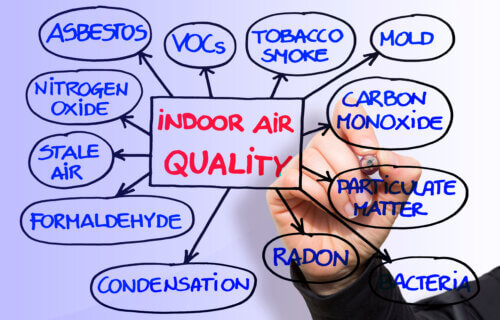LONDON — Many adults are uninformed about indoor air pollution and remain unaware of common pollutants in their homes, according to a study. A survey of 2,000 British adults revealed that a significant number of participants did not know that candles, pet hair, and air fresheners could be potential pollutants.
Furthermore, others were not aware of the potential health risks posed by these items, with 67% not associating indoor air pollutants with lung cancer and 81% dismissing their impact on heart disease. The U.K. study found that 64% of participants would open a window and 52% would open a door to let in fresh air, but 17% never considered the possible consequences of allowing pollution into their homes.
A spokesperson for Dyson, the company that commissioned the research, stated, “There are so many possible sources of pollution in the home. There has been a lot of discussion in recent months about issues stemming from particulates emitted by log-burning stoves, which many people have in their living rooms. However, indoor air pollution can also come from various sources, such as candles or paint. Moreover, if you live in an urban area, simply opening a window can let in outdoor pollutants, which could be detrimental to your health.”
The study also discovered that 39% of adults admitted that as long as their home “felt” clean, they assumed there was no air pollution. When asked which terms they most associated with the word “pollution,” 49% chose fossil fuels like oil or natural gas. Others connected it to personal transportation, such as cars, trains, or planes (43%), and manufacturing processes (31%). However, 21% selected single-use plastics, while 19% opted for aerosols and their related CFCs.
Almost half (43%) of the respondents confessed to not being knowledgeable about air pollution, and 48% expressed a desire to learn more about the issue. Additionally, the study found that 28% of participants, or someone in their home, were prone to regular coughing and sneezing fits.
In an effort to combat indoor air pollution, 65% of those affected tried to keep rooms well-ventilated, and 49% vacuumed regularly. Moreover, 32% switched from spray to roll-on deodorant, according to data from OnePoll.com.
Dyson’s spokesperson concluded, “As with many things in life, from making dietary adjustments to becoming more environmentally friendly, small lifestyle changes can have a significant impact. Switching from a spray deodorant to a roll-on is an excellent example of how to reduce indoor air pollutants in a minor way. However, implementing larger systemic changes, such as transitioning from internal combustion engines to electric vehicles, will take more time.”

Like all scare stories, there is no mention of the PEL (permissible exposure level), the point at which these “deadly” pollutants are deemed harmful to human life, the level of exposure we are actually experiencing, or for how long.
If the product had toxic chemicals at a harmful level, the container would be marked as a hazardous material with advisories right on the label. But that only tells you about how much is present in the product.
It’s reporting on the total contents of the container not how much is atomized, diluted, or otherwise applied through usage which is massively lower and very likely dissipates quickly meaning very low dosage and limited exposure.
As far as the off-gassing of chemicals used in building materials, the only way one would know of its presence is initially through smell but air monitoring is the only way to find out how much is actually present. Mold and many forms of asbestos are easily visually identified.
I would like to know how to test for these indoor pollutants. It’s one thing to suspect they are there but another thing to prove it and eliminate them.